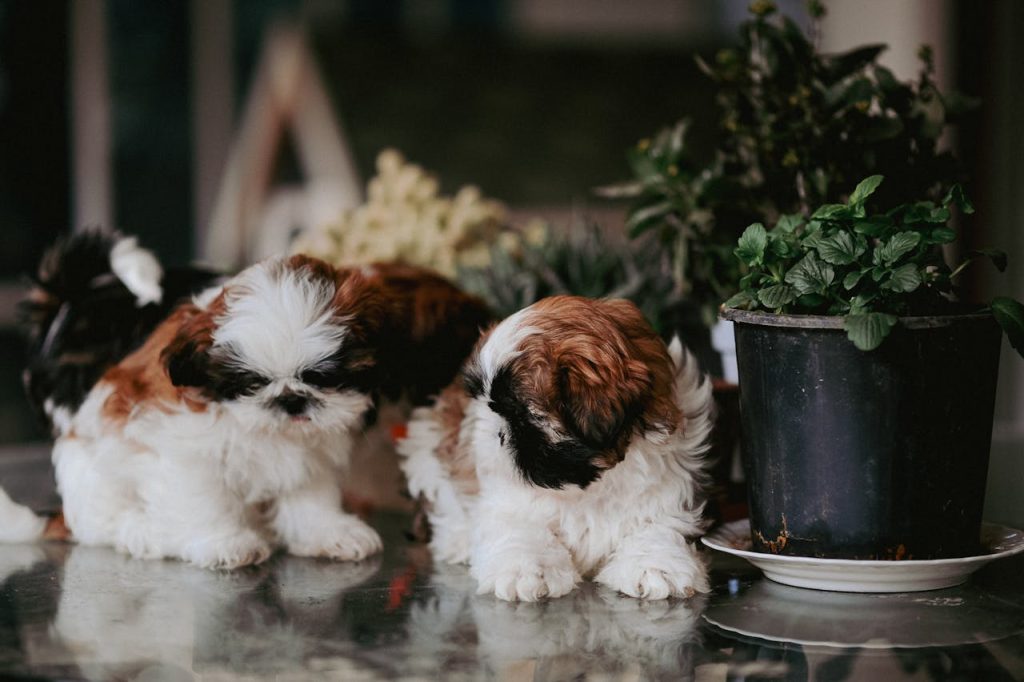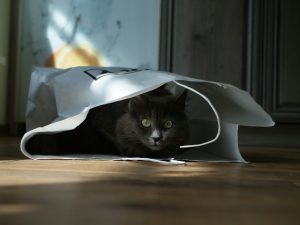
10 Surprising Toxic Houseplants for Pets You Might Already Own
Houseplants make apartments feel bright and peaceful, but not all greenery is pet-safe. Some of the most popular decorative plants are actually toxic houseplants for pets—capable of causing anything from mild stomach upset to severe poisoning. Because dogs and cats love to explore, even a single leaf or bite can lead to unnecessary vet visits or worse.
This guide reveals ten surprisingly common indoor plants that can harm your pets and explains how to recognize them before they cause problems. You’ll also find safer, equally beautiful alternatives that let you enjoy a lush apartment without putting your furry family at risk.
1. Peace Lily (Spathiphyllum)
Peace Lilies are a classic apartment plant thanks to their graceful white blooms—but they’re one of the most common toxic houseplants for pets. Containing calcium oxalate crystals, their leaves and stems can irritate the mouth, tongue, and throat when chewed. Symptoms include drooling, pawing at the face, and difficulty swallowing.
Replace them with non-toxic alternatives like Spider Plants or Parlor Palms, which are safe for both dogs and cats. For a comprehensive reference list of dangerous and pet-safe species, visit the ASPCA’s toxic and non-toxic plant directory.
2. Pothos (Epipremnum aureum)
Known for its trailing vines and easy care, Pothos (or Devil’s Ivy) thrives in low light—perfect for apartments—but it’s highly toxic to cats and dogs. The sap contains insoluble calcium oxalates that can cause oral irritation, vomiting, and swelling of the mouth and tongue if ingested.
Even hanging baskets aren’t always safe, as cuttings can drop where pets can reach. Swap Pothos for a pet-safe trailing plant like Swedish Ivy or a lush Boston Fern. To understand exactly how these toxins affect dogs, refer to PetMD’s plant toxicity guide for dogs.
3. Aloe Vera (Aloe barbadensis)
Aloe Vera is well-known for its healing properties for humans but can be harmful to pets. Its latex layer—the yellowish sap just beneath the skin—contains saponins that can cause vomiting, diarrhea, and lethargy in cats and dogs. The gel inside is harmless, but it’s nearly impossible for pets to distinguish between the two.
If you love the look of succulents, try Haworthia instead—it has a similar shape but no harmful compounds. For cat-specific symptoms and treatment details, see PetMD’s list of poisonous plants for cats.
4. Snake Plant (Sansevieria trifasciata)
The hardy Snake Plant—also called Mother-in-Law’s Tongue—is beloved for surviving almost any lighting or watering schedule. Unfortunately, it contains saponins, the same compounds found in Aloe, which irritate your pet’s digestive tract. Even a few bites can cause nausea, vomiting, and drooling that last for hours.
Because Snake Plants are often placed on the floor, curious dogs and cats can easily nibble the leaves. Replace them with pet-safe options such as Cast Iron Plants or Calathea varieties. For additional preventive wellness advice, visit the VCA Hospitals preventive care guide to keep your household safe and healthy.
5. Philodendron (Philodendron spp.)
A staple of indoor décor, Philodendrons are attractive climbing and vining plants—but every part of the plant is toxic to pets. The same oxalate crystals found in Pothos can cause painful oral irritation, swelling, and digestive upset. Kittens and puppies are especially at risk because of their teething curiosity.
Try replacing Philodendrons with heart-leaf Hoyas or Peperomia, both of which offer similar lush foliage without the toxicity. If your pet chews a Philodendron leaf, wipe their mouth with a damp cloth and contact your vet immediately, referencing the ASPCA toxic plant directory for identification and guidance.
6. Dieffenbachia (Dieffenbachia seguine, also called Dumb Cane)
Dieffenbachia is prized for its striking patterned leaves, but its sap is among the most irritating of all toxic houseplants for pets. When chewed, it releases microscopic needles of calcium oxalate that can cause severe swelling in the tongue and throat, making it hard for pets to swallow or breathe.
Keep this plant far from reach—or better yet, remove it entirely. Choose safer tropical alternatives like Areca Palm or Bamboo Palm for the same lush look. If you suspect exposure, rinse your pet’s mouth and call your vet for guidance on next steps.
7. Sago Palm (Cycas revoluta)
The Sago Palm may look like a miniature tropical tree, but it’s one of the most dangerous toxic houseplants for pets. Every part of it—especially the seeds—contains cycasin, a toxin that can cause severe liver failure in dogs and cats. Just one seed can be fatal if ingested.
Unfortunately, Sago Palms are often mislabeled or sold as indoor décor palms in garden centers. Avoid them entirely and opt for true palms such as Areca, Ponytail, or Parlor Palm, which are non-toxic and just as attractive. Always double-check plant names before purchase using the ASPCA’s verified database.
8. ZZ Plant (Zamioculcas zamiifolia)
The glossy, modern ZZ Plant is almost indestructible—but that toughness hides a downside. Its sap contains insoluble calcium oxalates that can irritate your pet’s mouth, throat, and stomach. Chewing even a single leaf can cause drooling and vomiting, especially in cats who love to swat at dangling fronds.
ZZ Plants are best kept in offices or pet-free zones. If you want a similarly low-maintenance look, try a Cast Iron Plant instead—it thrives on neglect and is completely non-toxic. When in doubt, confirm a plant’s safety before purchase through the PetMD toxic plant guide for dogs.
9. Jade Plant (Crassula ovata)
Often gifted as a “lucky” plant, the Jade Plant (or Money Plant) is another common danger to pets. Ingestion can cause vomiting, incoordination, and even a slowed heart rate. The toxin responsible hasn’t been fully identified, but its effects on pets are well-documented.
Replace Jade with pet-safe succulents like Echeveria or Burro’s Tail. These species look just as charming on a windowsill but won’t harm your furry family. If your pet ever nibbles a mystery succulent, take a photo and consult your vet or the ASPCA plant directory for identification.
10. Fiddle Leaf Fig (Ficus lyrata)
The beloved Fiddle Leaf Fig may be an Instagram favorite, but its milky sap can cause irritation and stomach upset in pets. Like many other Ficus varieties, it contains compounds that inflame the mouth and digestive tract. Pets who chew on the leaves may develop drooling, vomiting, or skin irritation around the mouth.
Instead, consider a Rubber Plant (Peperomia obtusifolia)—a completely safe species with similar glossy leaves and dramatic height. Always check plant names carefully since “rubber plant” is also used for toxic Ficus elastica varieties.
Final Thoughts: A Greener, Safer Home for Everyone
Creating a healthy, plant-filled apartment doesn’t have to come at the expense of your pets’ safety. By learning which species to avoid and choosing pet-safe alternatives, you can enjoy all the calm beauty of indoor greenery without risk. Small changes—like checking tags before purchase or moving plants out of reach—go a long way toward keeping curious noses safe.
If you’re ever unsure whether a plant is safe, verify it before bringing it home. The ASPCA’s plant list and PetMD’s toxicity database are trusted sources that can help you make confident, pet-friendly choices. A little research today means a safer, happier apartment tomorrow.
Frequently Asked Questions
How can I tell if a houseplant is toxic to pets?
Always check a plant’s scientific name against trusted sources before buying. The ASPCA’s plant list and PetMD database both provide verified information on toxicity for dogs, cats, and other pets.
What should I do if my dog or cat eats part of a toxic plant?
Stay calm, remove any remaining plant matter from their mouth, and call your veterinarian or local emergency clinic immediately. Bring a sample or photo of the plant for identification—it helps the vet determine the best treatment plan quickly.
Are all parts of toxic plants harmful, or just the leaves?
Toxic compounds can be concentrated in different parts of each plant—sometimes leaves, stems, roots, or even pollen. The safest approach is to assume the entire plant poses a risk and avoid keeping it in reach of pets altogether.
What are some safe alternatives to common toxic houseplants?
Great non-toxic options include Spider Plants, Boston Ferns, Areca Palms, and Haworthia succulents. They’re hardy, attractive, and completely pet-safe—perfect for brightening any apartment without worry.
Can pets get sick from just brushing against a toxic plant?
In most cases, mild contact irritation is possible but less serious than ingestion. However, sap from plants like Dieffenbachia or Fiddle Leaf Fig can irritate skin or eyes, so it’s best to keep all toxic species out of reach entirely.

Join the Busy Pet Parent Newsletter!
Get easy routines, time-saving tips, and the latest gear reviews—delivered straight to your inbox.
Perfect for busy pet owners, apartment dwellers, and anyone who wants a happy, healthy companion (without the stress).
Exclusive guides & checklists
Product recommendations & deals
No spam—unsubscribe anytime!




